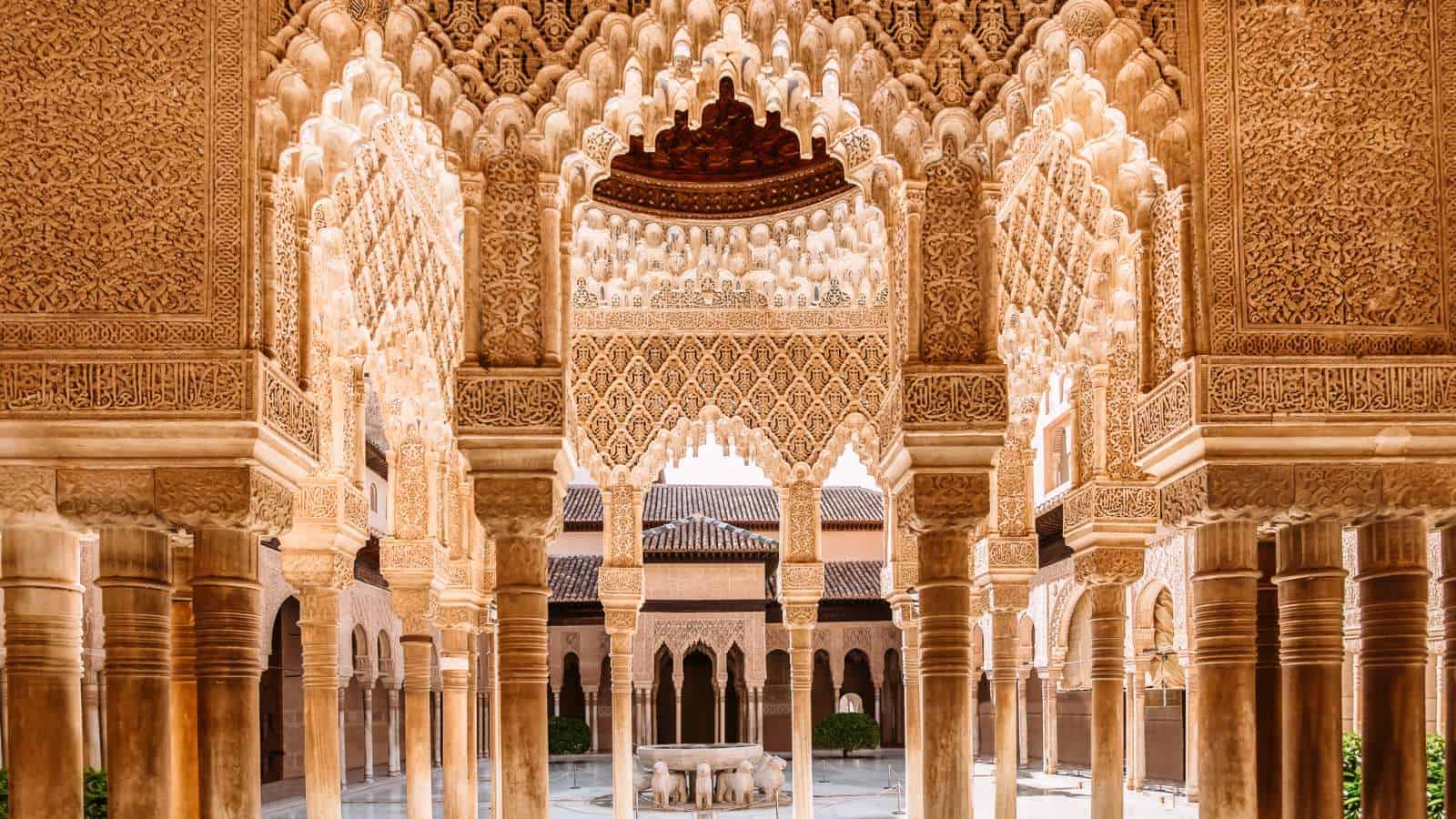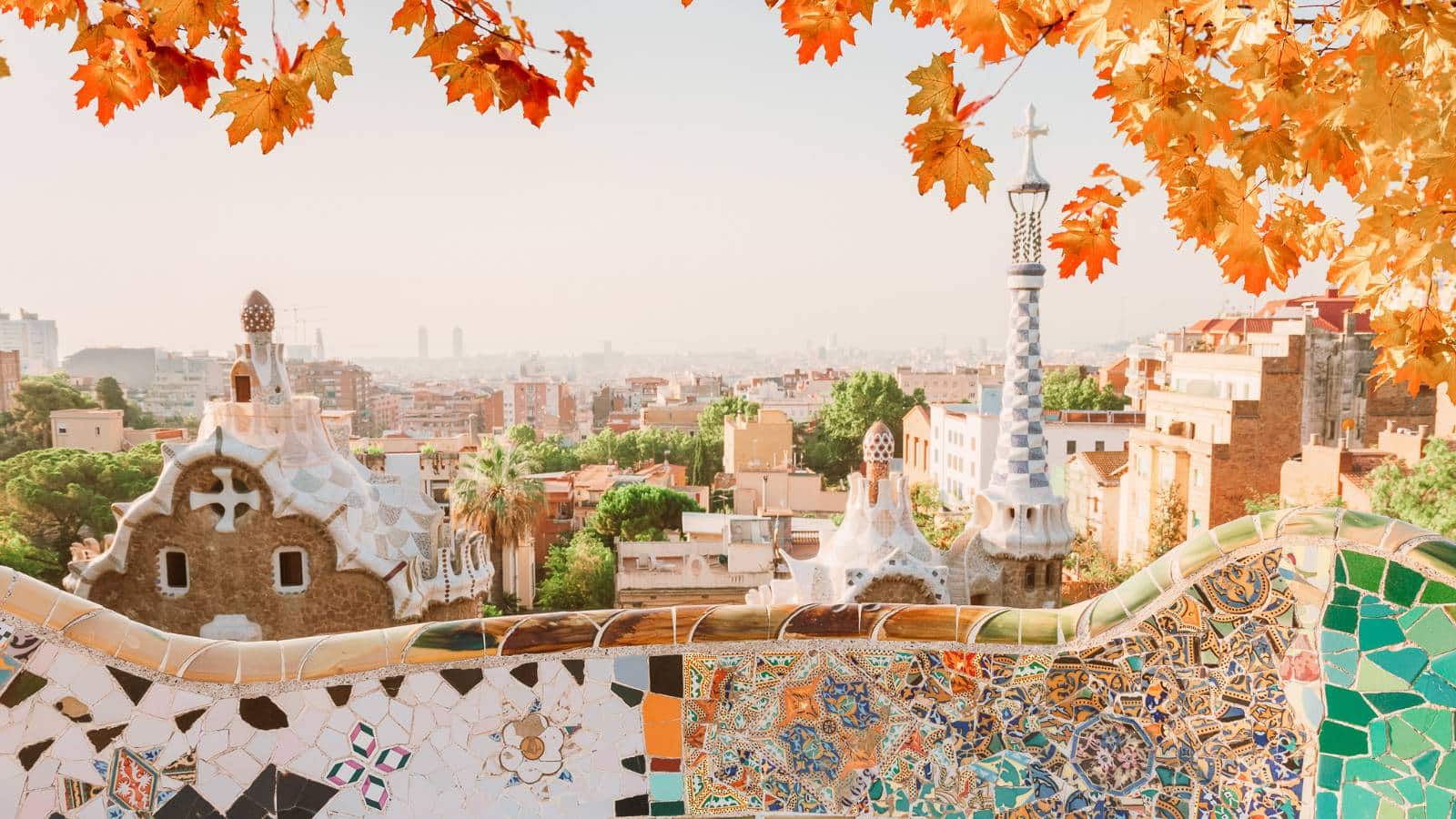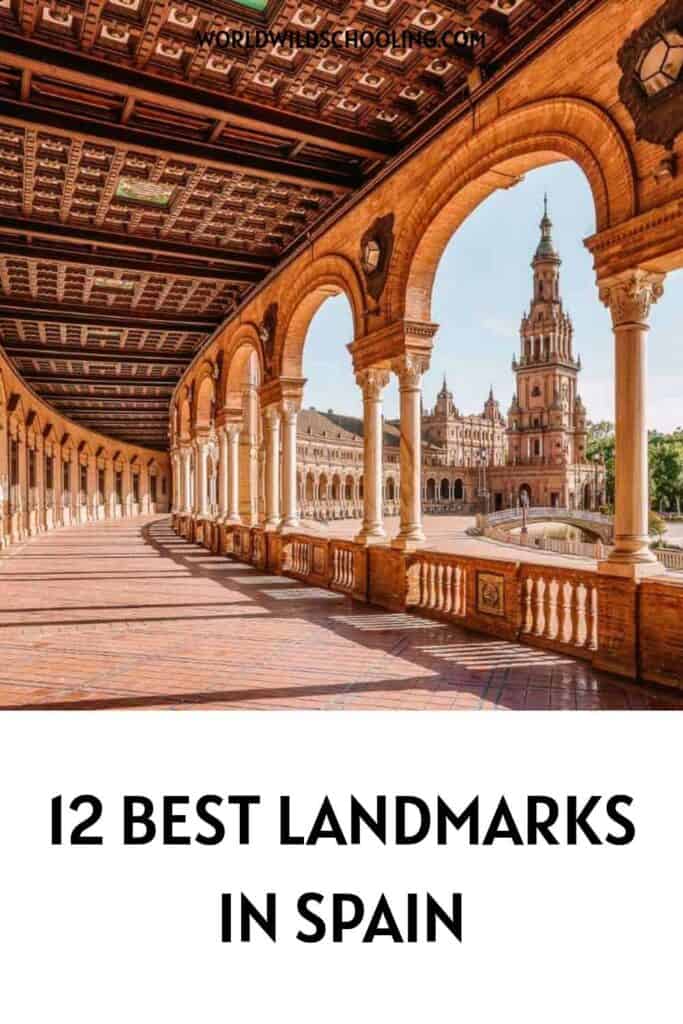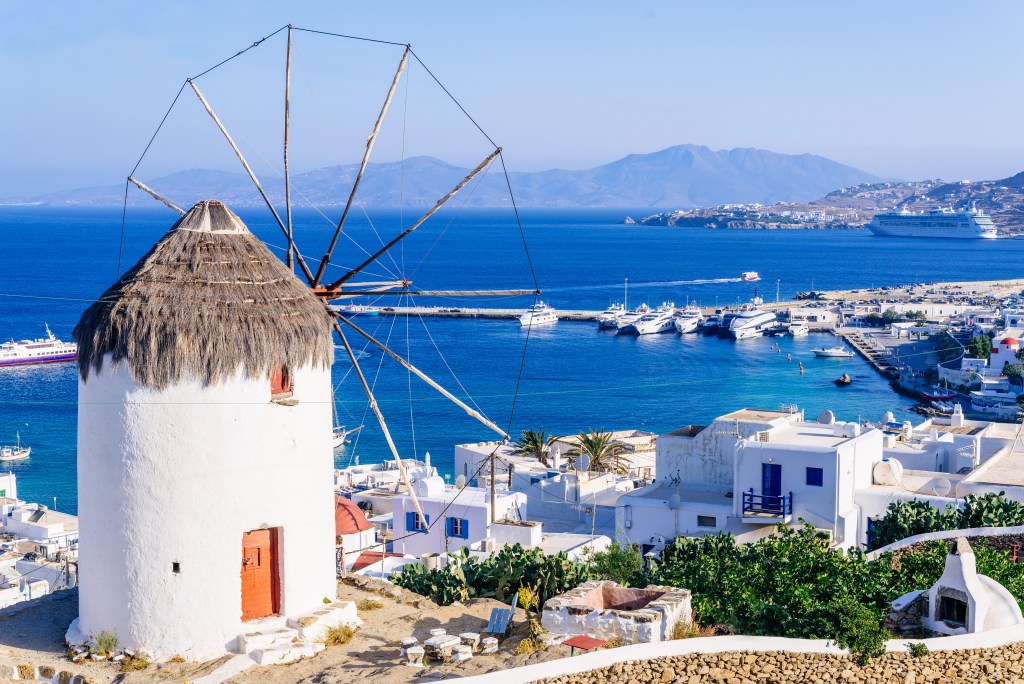12 Famous Landmarks in Spain That Will Make You Say ‘¡Viva España!’
All recommendations on World Wild Schooling are independently selected by our editors. We may earn an affiliate commission from purchases made through our links.
Spain is home to numerous UNESCO World Heritage Sites, world-renowned landmarks, massive royal places, and architectural marvels you cannot afford to miss during your European trip.
Planning your Spanish trip? Add these must-visit landmarks to your travel list. Each landmark on this list not only tells a unique story but also offers an unforgettable experience for tourists.
Whether you are wandering through the halls of El Escorial, exploring the artistic treasures of the Guggenheim Museum in Bilbao, or soaking in the panoramic views from Park Güell, these landmarks in Spain allow you to enrich your trip, learn some history, marvel at world-class architecture, and snap some memorable photos.
Swipe and Vote: See What Travelers Recommend
Which iconic Spanish landmark would you teleport to right now for a jaw-dropping view and questionable sangria reviews?
This is a swiper quiz, swipe right for yes, swipe left for no.
 © Mistervlad / Adobe Stock
© Mistervlad / Adobe Stock
 © Sailorr / Shutterstock
© Sailorr / Shutterstock
 © robertdering Adobe Stock
© robertdering Adobe Stock
 © SeanPavonePhoto / Adobe Stock
© SeanPavonePhoto / Adobe Stock
 © neirfy / Adobe Stock
© neirfy / Adobe Stock
Results
 1
1
 2
2
 3
3
 4
4
 5
5
Sagrada Familia, Barcelona

Sagrada Familia, a large Roman Catholic basilica in the heart of Barcelona, is Antoni Gaudí’s most famous work. Although construction started in 1882, the massive church is projected to be completed in 2026.
There are so many reasons this church is iconic, but its unique architectural style is definitely a standout. The church features Gothic and Art Nouveau styles, with a touch of Gaudi’s unique styles. Gaudí designed the interior to resemble a forest, with tree-like columns and vibrant stained glass windows creating a mystical light effect.
If you are looking for some Instagrammable shots, you can capture some great snaps from the little park in front of the basilica or on the Avinguda Gaudi, a semi-pedestrianized street that offers amazing views of the basilica. You could also enjoy views of this masterpiece from different rooftop spots in the city.
Read more: Best Things To Do in Barcelona
Alhambra, Granada

If there is a landscape that perfectly showcases the pinnacle of Moorish architecture and heritage in Spain, it would have to be the stunning Alhambra. This 13th-century palace complex served as the royal palace of the Nasrid emirs. Today, it is renowned for its beautiful Islamic architecture and art, stunning gardens, and strategic location overlooking Granada.
When visiting, take time to soak in the ornate stucco work, elaborate tile mosaics, intricately carved wood ceilings, reflecting pools and fountains, and well-manicured gardens.
Whether you are into history, architecture, or just a lover of natural beauty, the Alhambra will fascinate you.
Read also: Tourist Traps To Avoid in Spain
Park Güell, Barcelona

Another of Gaudi’s most iconic architectural pieces, Park Güell, is a landmark you should not miss when exploring Barcelona. Park Guell is considered one of Gaudi’s most colorful and playful creations. The park features Gaudi’s unique styles, which are typically very artistic with elements of Catalan Modernism. The vibrant mosaics, colorful stone structures, and organic shapes inspired by nature are very visually appealing, making the park one of the most Instagrammable places in Barcelona.
When in Park Güell, do not miss the Dragon Stairway, a grand staircase featuring a mosaic-covered dragon; and the Gaudi House Museum, Gaudí’s former residence, now a museum showcasing his personal life and work. You also want to find a spot within the park and enjoy stunning panoramic views of Barcelona or walk through the park’s garden, admiring the landscaped gardens with Mediterranean plant species.
Read also: Expat Destinations in Spain
Royal Palace, Madrid

If there is a landmark that has witnessed centuries of Spain’s royal history, it would have to be the Royal Palace of Madrid. This building served as the official residence of the Spanish Royal Family, but it is now primarily used for state ceremonies and official functions today. It is one of the largest palaces in Europe by floor area, with over 3,400 rooms.
The palace is renowned for its opulent architecture, lavish interiors, and extensive art collections. It is also a great place to marvel at Baroque and Neoclassical architecture. The grand facades, expansive courtyard, and frescoes are a dream place to explore.
Parts of the palace are open to the public for tours. When visiting, do not miss the Royal Armory, which showcases an impressive collection of medieval armor; the lavishly decorated Throne Room, featuring red velvet walls, chandeliers, and frescoes; and the royal library, which hosts a vast collection of books, manuscripts, and maps, along with beautiful architectural details.
You can take guided tours to gain deeper insights into the palace’s history and architecture, or you can use audio guides to explore at your own pace.
Read also: Fairytale Villages in Spain
Great Mosque (La Mezquita), Córdoba

The Great Mosque of Córdoba, also known as La Mezquita, is one of Spain’s most extraordinary monuments. Originally a mosque, it is a designated UNESCO World Heritage Site known for blending Roman, Gothic, and Moorish architectural styles.
Thought the mosque’s architecture was mind-blowing? Wait until you find its unique additions, which give it a distinctive character. After the Reconquista, a Catholic cathedral was built at its center, creating a unique fusion of Islamic and Christian architecture. History enthusiasts would like to know that in 1236, Córdoba was captured by Christian forces, and the mosque was converted into a Catholic cathedral. Centuries later, the Catholic cathedral was added at the mosque’s center. Where else will you see a mosque-cathedral? The unique blend of Islamic and Christian architecture provides a fascinating visual and cultural experience, which is why La Mezquita is a must-see in Spain.
When visiting, you can go up the Torre del Alminar, the cathedral’s bell tower that offers panoramic views of Cordoba.
Read also: Surreal Places in Spain
Cathedral of Santiago de Compostela, Galicia

The Cathedral of Santiago de Compostela has been a famous pilgrimage site since the Middle Ages. It is the reputed burial place of Saint James the Great, one of Jesus Christ’s apostles. The cathedral is renowned for its stunning Romanesque architecture, with later Gothic and Baroque additions.
The construction of this cathedral began in 1075 but received numerous additions through the centuries. It therefore holds so much history, making it a perfect spot for history enthusiasts.
🏨 Explore all your hotel options here
Save this
There is so much to do at this cathedral. You can admire its architecture from the interior, attend a pilgrim mass typically on Fridays and special occasions, tour the rooftop, explore the crypt believed to have the remains of Saint James, or explore the Pilgrim’s Museum and learn about Camino de Santiago.
Read also: Insta-Worthy Spots in Spain
City of Arts and Sciences, Valencia

The City of Arts and Sciences is a futuristic architectural and cultural complex in Valencia. It is known for its cutting-edge and contemporary design. The complex is one of Spain’s most important modern tourist destinations, attracting millions of visitors each year.
Its sleek, white structures with flowing, organic shapes; large expanses of glass, and reflecting pools are visually stunning. When visiting, do not miss L’Oceanogràfic, one of the largest aquariums in Europe, which houses different marine habitats. You also want to spare some time for Palau de les Arts Reina Sofia, an opera house and performing arts center with a striking, helmet-like structure; Umbracle, an open-air landscaped walkway with native plant species and contemporary sculptures; and Assut de l’Or Bridge, a white cable-stayed bridge that connects different parts of the complex.
Be sure to purchase combined tickets to access different parts of the complex.
Read also: Most Beautiful Cities in Europe
La Pedrera (Casa Milà), Barcelona

You know Gaudi and his works are iconic, so another architectural marvel by him, La Pedrera, also known as Casa Milà, is another landmark you cannot afford to miss. A UNESCO World Heritage site, this building is known for its undulating stone façade, twisting wrought iron balconies, and beautiful rooftop decorated with chimneys.
It is a prime example of Gaudí’s naturalistic phase, where he drew inspiration from organic forms and structures. The building was constructed between 1906 and 1912 for the wealthy Milà family, who wanted a unique residence to stand out in the city. It has undergone several restorations to preserve its structure and aesthetics, and it is now open to the public as a museum.
Make sure that you explore the Noble Floor, the primary residential floor, which was restored to showcase early 20th-century furnishings and decor, providing insight into the lifestyle of the Milà family.
Read also: Luxurious Cities in Europe
Guggenheim Museum, Bilbao

The Guggenheim Museum is housed in an iconic building that offers an unparalleled blend of architectural wonder and contemporary art, making it a must-visit destination for any trip to Spain.
The museum hosts a vast collection of contemporary art, including works by renowned contemporary artists like Jeff Koons, Richard Serra, and Louise Bourgeois.
“Puppy” by Jeff Koons, a massive floral sculpture of a West Highland Terrier located outside the museum, is a highlight worth saving time for. You can also spend time both outside and inside the building admiring its innovative design.
Read also: Charming Small Towns in Europe
Segovia Aqueduct, Segovia

The Segovia Aqueduct is one of the world’s best-preserved Roman aqueducts. Built in the early 2nd century AD, this aqueduct has stood the test of time. The aqueduct’s most famous and photogenic section is the double-arched segment that runs through Plaza del Azoguejo in the heart of Segovia. This section features 167 arches, standing at a maximum height of about 93.5 feet (28.5 meters). If you want to appreciate the grandeur of the aqueduct and see where it reaches its highest eight, focus on the section at Plaza del Azoguejo.
During your visit, you can ascend the stairs near Plaza del Azoguejo to get a bird’s-eye view of the structure and the surrounding cityscape. The aqueduct is also a popular spot for photography, especially during sunset and sunrise.
Read also: Romantic European Destinations
Plaza de España, Seville

Plaza de España (Spain’s Square) is an impressive semi-circular plaza famous for its architectural style and historical significance. This plaza, a perfect example of the Spanish Renaissance Revival style, was built for the Ibero-American Exposition of 1929. The large brick building features Baroque and Moorish influences, making it even more stunning.
Beyond its impressive architecture, do not miss Museo de Artes y Costumbres Populares, a museum within the plaza that showcases Andalusian culture and traditions. While visiting, you can rent a boat to navigate the canals, ride on a horse-drawn carriage around the plaza and through nearby Maria Luisa Park, or just pose for photos with the impressive architecture.
Read also: Spectacular Beach Destinations in Spain
El Escorial, San Lorenzo de El Escorial

El Escorial, also known as the Royal Site of San Lorenzo de El Escorial, is a vast and historic complex that serves as a monastery, royal palace, and museum. It features a symmetrical grid layout and massive granite walls.
When exploring, stop by the impressive Basilica, the Pantheon of the Kings, the burial place for most of Spain’s monarchs from the 16th century onwards; and the palace’s well-maintained gardens, which offer a peaceful retreat with beautiful views of the surrounding mountains. In the library, you can browse through ancient manuscripts, rare books, and unique Renaissance architecture, all while enjoying views of the frescoed ceiling.
Spare half a day for an exhaustive trip that covers the palace, basilica, pantheon, library, and gardens.
Read also: Pocket-Friendly European Cities To Visit
Pin It Now, Read It Later











